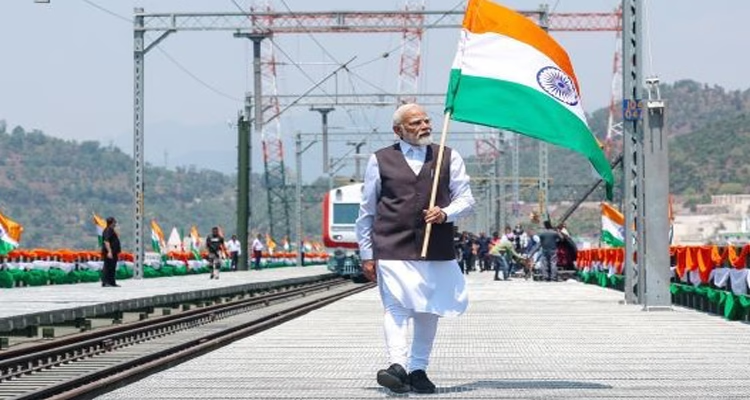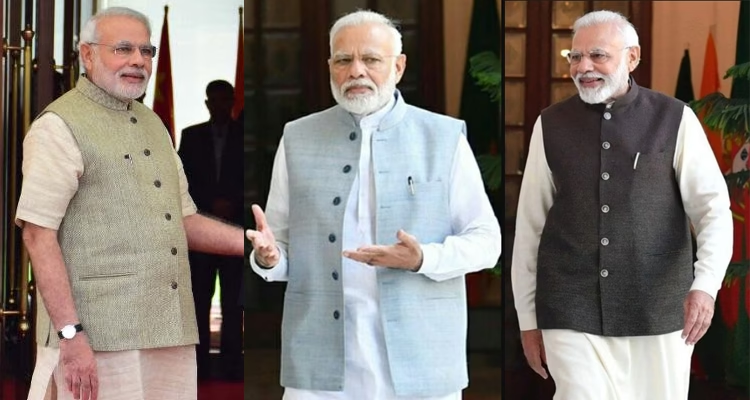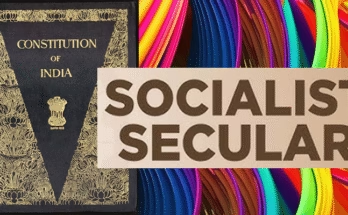
 For decades, politicians have tried to reflect the identity of the people they represent through the clothes they wear. Prime Minister Narendra Modi has gone a step further, creating a lasting personal brand with his distinctive kurtas. His sense of style wasn’t developed overnight as Chief Minister or Prime Minister—it is something that has always been a part of him. Modi has become a total style icon, with a fashion sense that’s entirely his own.
For decades, politicians have tried to reflect the identity of the people they represent through the clothes they wear. Prime Minister Narendra Modi has gone a step further, creating a lasting personal brand with his distinctive kurtas. His sense of style wasn’t developed overnight as Chief Minister or Prime Minister—it is something that has always been a part of him. Modi has become a total style icon, with a fashion sense that’s entirely his own.
He strongly believes in the Gujarati proverb that says, a man’s worth is determined by what he wears. His attire varies depending on whether he is in India or abroad, showing how conscious he is of the setting and occasion. Modi’s fondness for khadi is not new. When he was the Chief Minister of Gujarat, he regularly visited khadi outlets in Ahmedabad or Gandhinagar every October to purchase fabric and ready-made garments. Often, his cabinet colleagues and senior officials would accompany him.
Modi’s usual outfit—a kurta and vest—has become symbolic. His signature half-sleeve kurta, now known popularly as the Modi Kurta, and his carefully tailored jackets are almost always made from cotton or silk, neatly pressed, and handcrafted in Gujarat.
The Modi Kurta–Jacket combination has become a fashion trend among young Indians, with nearly 1,500 jackets being sold daily at khadi outlets. Although this jacket style was once associated with Jawaharlal Nehru, Modi has made it even more popular. According to the Managing Director of JadeBlue Lifestyle India Ltd, which supplies Modi’s clothing, “Modiji has made the jacket mainstream. While Nehruji mostly wore white or off-white versions, Modiji introduced vibrant colours and updated the design. Now it’s a corporate fashion statement too.”
Historically, the Nehru jacket has its roots in the achkan—an Indian version of a western-style coat. In the 10th century, a similar garment was actually a short shirt worn over a longer kurta and under a coat, meant only for men. Despite its evolution, the basic structure of the Nehru jacket has stayed the same over the centuries.
Modi’s wardrobe has drawn significant attention from both domestic and international observers. Though he has a taste for premium-quality clothing, his style continues to reflect his cultural roots. He has moved away from the crumpled dhotis and kurtas traditionally associated with Indian politicians, instead choosing sharp cuts, rich textures, and neat silhouettes.

Across India, stores now offer “Modi-wear”—jackets and kurtas said to be made with his approval or in his style. According to The New York Times, the “Modi Kurta” is a reimagined version of the Indian tunic shirt with half-length sleeves, suited for a more active and practical lifestyle. The kurta has since gained global recognition. Fashion experts even point out that the jackets Modi wears often feature darted pockets that offer a slimming effect.
Interestingly, the now-famous Modi Kurta had very humble beginnings. Speaking about its origin, Modi explained: “My work with the RSS and BJP meant excessive travelling and unpredictable schedules. As someone who always washed his own clothes, I found that full-sleeve kurtas were harder to wash and dry. So, I began cutting the sleeves short.” What began as a practical adjustment evolved into a signature style.
Modi’s preference for bright colours and finely tailored jackets reflects a refined aesthetic. In his early years, he would cut his kurta sleeves short not only for convenience but also to reduce how much space they occupied in his travel bag. His sense of appearance, which became more polished about a decade ago, shows a clear understanding of how attire can shape public perception and build a personal brand.
Ultimately, Narendra Modi has not only emerged as a global statesman but also as a powerful style icon—proving that appearance plays a major role in modern-day leadership. His clothing choices convey confidence, clarity, and cultural pride, setting a new benchmark for how a politician can dress with both meaning and impact.
(Written by Vinod Chandrashekhar Dixit)



